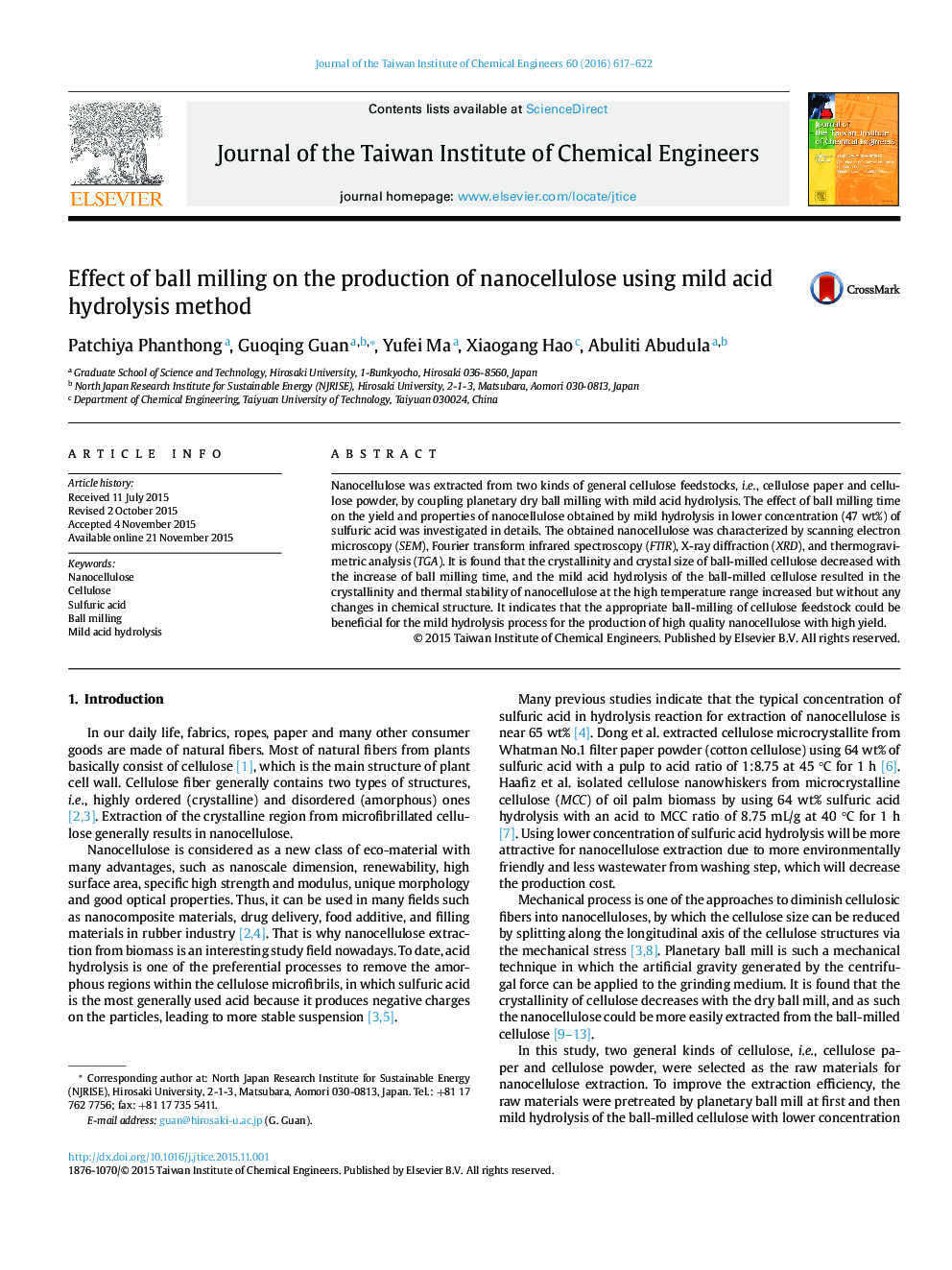| کد مقاله | کد نشریه | سال انتشار | مقاله انگلیسی | نسخه تمام متن |
|---|---|---|---|---|
| 690510 | 1460414 | 2016 | 6 صفحه PDF | دانلود رایگان |
• Ball-milling pretreatment incorporated with mild acid hydrolysis was applied for nanocellulose extraction.
• Ball-milling pretreatment led to the decreasing of crystallinity and crystal size of cellulose.
• A high nanocellulose yield was obtained by the present method.
• The obtained nanocellulose had high crystallinity, small crystal size, and high thermal stability.
Nanocellulose was extracted from two kinds of general cellulose feedstocks, i.e., cellulose paper and cellulose powder, by coupling planetary dry ball milling with mild acid hydrolysis. The effect of ball milling time on the yield and properties of nanocellulose obtained by mild hydrolysis in lower concentration (47 wt%) of sulfuric acid was investigated in details. The obtained nanocellulose was characterized by scanning electron microscopy (SEM), Fourier transform infrared spectroscopy (FTIR), X-ray diffraction (XRD), and thermogravimetric analysis (TGA). It is found that the crystallinity and crystal size of ball-milled cellulose decreased with the increase of ball milling time, and the mild acid hydrolysis of the ball-milled cellulose resulted in the crystallinity and thermal stability of nanocellulose at the high temperature range increased but without any changes in chemical structure. It indicates that the appropriate ball-milling of cellulose feedstock could be beneficial for the mild hydrolysis process for the production of high quality nanocellulose with high yield.
Figure optionsDownload as PowerPoint slide
Journal: Journal of the Taiwan Institute of Chemical Engineers - Volume 60, March 2016, Pages 617–622
